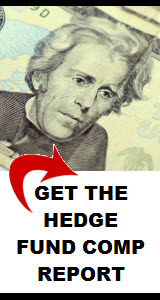When Paul Tudor Jones says adieu to roughly 60 employees, Pershing Square Capital Management shaves its staff by 10 percent and Citadel trims its headcount by more than a dozen souls, this is a fair question to ask. After all, these are some of the largest and, most successful, names in the industry.
What’s Driving This?
While the obvious reasons for headcount reductions are lackluster performance and shrinking assets under management (AUM)—the root causes are deeper still.
Pension funds, institutional investors and endowments have been vocal regarding exorbitant hedge fund fee structures for years. Until recently, investors have been content to complain loudly, while quietly pocketing the gains these hedge funds generated.
However, the game has changed. Hedge fund performance has plummeted as have investor gains. What was formerly little more than good-natured grumbling became a rallying cry for hedge fund investors of all stripes. Hedge fund gains, which had previously justified the two-and-twenty fee structure, evaporated. As a result, CalPERS, AIG, MetLife, NYCERS and a host of other investors have either reduced or eliminated hedge fund exposure.
The Future of Fee Structures
Steve Eisman of Neuberger Berman, a private, independent, employee-owned investment management firm, has embarked on a new approach. For an investment of $1 million, he exacts a fee of 1.25 percent. This fee cannot be described as cheap. Most long-only mutual funds have fees that are far lower, but compared to hedge fund fees, it is a bargain basement rate.
In case you’ve forgotten, Eisman was the guy who foresaw the subprime mortgage securities collapse. You may recall him from Michael Lewis’ book The Big Short or from the 2015 movie of the same name in which he appeared as the fictional character Mark Baum, portrayed by Steve Carell.
Although his product is not a hedge fund, Eisman believes this 1.25 percent flat fee will become standard in the hedge fund industry within 10 years.
Whether that will come to pass is uncertain, but it is certain that something needs to change. Either performance must improve to justify the current fee structures or, alternatively, the fee structures must be altered to fairly reflect actual results.
Change Is Afoot
One example is Caspian Capital. They have offered discounted fees to long-term investors. Other hedge fund firms have implemented hard hurdle rates, usually between 4 and 10 percent, while others have opted to use soft hurdle benchmarks such as Libor.
How rapidly these changes occur and how long they will stand is entirely dependent on hedge fund performance. Underperformance will accelerate these changes and outperformance may kill them entirely. The needle is likely to settle somewhere in between these extremes.
What Does it Mean for Hedge Fund Jobs?
For obvious reasons, small hedge fund firms and hedge fund startups are in the most favorable position to experiment with fee structures. For this reason, they may be the preferred target of opportunity for anyone seeking first-time hedge fund employment. That is not to suggest that employment opportunities in larger firms have dried up—they have not. It is only to suggest that startups and smaller firms may be the softest target in the present set of circumstances.






Comments on this entry are closed.